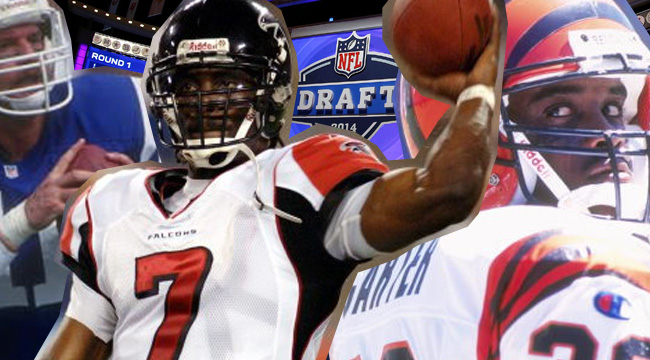
The Los Angeles Rams, perhaps desperate to make a splash in their first season in a new city, pulled off a massive trade Thursday morning: they acquired the top pick in the 2016 NFL Draft from the Tennessee Titans along with a fourth- and sixth-rounder in exchange for (deep breath) the 15th, 43rd, 45th and 76th picks this year and a first- and third-rounder next year.
There is no thirst like the NFL's thirst for QBs. You have never lusted after anyone like a team has after a QB who might be good maybe.
— Michael Felder (@InTheBleachers) March 9, 2016
That thirst is very likely for Carson Wentz, a quarterback from North Dakota State, or for Cal’s Jared Goff. The Rams’ current quarterback is … honestly, could you name him without looking? It’s some guy who will be getting out of the way for Wentz or Goff very quickly.
Here’s the thing: In football, and sports in general, trades like this rarely work out better for the team getting the top pick than for the team getting a bushel of picks. The Rams defied the odds and made this work in 1997 to land Orlando Pace in a trade with the Jets, so maybe the key there was the fact it’s impossible to lose a trade with the Jets.
The Giants and Chargers made a swap in 2004, with the Chargers drafting Eli Manning at No. 1 and dealing him to the Giants for Philip Rivers (the fourth pick) and what became Shawne Merriman and Nate Kaeding. Manning won two Super Bowls, but Rivers has been among the better quarterbacks in the NFL during his career while Kaeding and Merriman were good, too. So maybe a wash?
A wash is usually the best possible outcome for the team moving up.
Otherwise, it’s almost always bad. Here are some examples:
5. Ki-Jana Carter, top pick: It’s possible if you are under the age of 30, you have no idea who he is. It was 1995 and the expansion Carolina Panthers had the top pick while the Cincinnati Bengals were desperate for a running back. So Cincy traded for the No. 1 pick, took Carter, who got hurt in the preseason and was never effective after that. He ran for 1,144 yards in his career so, yeah, bad move.
The Panthers selected Kerry Collins fifth overall, who had his own issues, but took his team to an NFC title game and eventually got the Giants to a Super Bowl later in his career. Carolina didn’t come away laughing here, but they came away better off without Carter.
4. Patrik Stefan for the Sedins: This was an extremely complicated situation, but it ended with the Vancouver Canucks dealing the top pick in the 1999 draft to the Atlanta Thrashers, so they could move down and take both Henrik and Daniel Sedin with the second and third picks. The Sedins will go into the Hall of Fame when they retire while Stefan’s most memorable moment in seven NHL seasons was this:
3. The Colts had to have Jeff George: In 1990, the Colts were desperate for a quarterback and felt George was the answer. He was not. He went 14-35 as a starter with the Colts and finished his career with 154 touchdown passes and 113 interceptions. The Falcons in return got a solid lineman in Chris Hinton and wide receiver Andre Rison, who was dominant in his five years with Atlanta and finished his career with 10,000 receiving yards.
2. The Flyers and Eric Lindros: This is perhaps the best example of the value of one great player over many good ones. It all started in 1991 because Lindros refused to play for the Quebec Nordiques, who later became the Colorado Avalanche. After sitting a year, the Nordiques capitulated and traded Lindros to the Flyers.
The deal was massive, but the Nordiques/Avalanche received Peter Forsberg, Mike Ricci and $15 million in cash along with other players and picks. Lindros became an MVP and should be in the Hall of Fame, but Forsberg is in the Hall of Fame and he won two championships with the Avs.
One of the players the Avs acquired was Jocelyn Thibault, who was later traded for Patrick Roy. Lindros forced the Nordiques’ hand and they still won this trade by a million miles.
1. Atlanta trades up for Michael Vick: The deal in 2001 was with the Chargers, who moved down to take running back LaDainian Tomlinson with the fifth pick and quarterback Drew Brees at the top of the second round. There were a couple other players involved, but the Chargers nabbed two future Hall of Famers for an above-average quarterback who went to prison for running a dogfighting outfit.
Yes, the Chargers let Brees get away after a shoulder injury, but this is still an example of the Falcons getting worked over in a trade.






